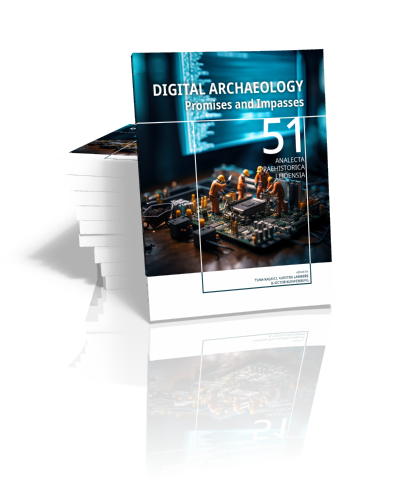Dr. Karsten Lambers

Karsten Lambers is an associate professor and head of the Digital Archaeology research group at the Faculty of Archaeology, Leiden University. His research considers computational methods (e.g., Machine Learning) that enable the (semi-) automated extraction of meaningful archaeological entities from large bodies of digital data from different sources as a starting point for archaeological analysis and heritage management. Examples include the detection of burial mounds in LiDAR data and the detection of archaeological concepts in excavation reports. He also conducts multi-proxy analysis of human-environmental interaction with a focus on settlement patterns and resource use.
Karsten holds degrees in American Anthropology (MA, University of Bonn, 1998) and Prehistoric Archaeology (PhD, University of Zurich, 2005). His award-winning PhD research investigated the famed Nasca geoglyphs in southern Peru using a combination of field survey, remote sensing, 3D modelling and GIS-based spatial analysis. Before joining Leiden University, he held research and teaching positions at ETH Zurich, University of Zurich, the German Archaeological Institute, and the universities of Konstanz and Bamberg. At Leiden University he is affiliated with the SAILS initiative and directs research projects in computational archaeology and field projects in the Netherlands and in Switzerland.
Selected publications
- Kothieringer K., Seregély T., Jansen D., Steup R., Schäfer A., Lambers K. & Fuchs M. (2023), Mid‐ to Late Holocene landscape dynamics and rural settlement in the uplands of northern Bavaria, Germany, Geoarchaeology 38(2): 220-245.
- Brandsen A., Verberne S., Lambers K & Wansleeben M. (2022), Can BERT dig it? Named entity recognition for information retrieval in the archaeology domain, Journal on Computing and Cultural Heritage 15(3): 1-18.
- Verschoof-van der Vaart W.B. & Lambers K. (2021), Applying automated object detection in archaeological practice: A case study from the southern Netherlands, Archaeological Prospection 29: 15-31.
- Verschoof-van der Vaart W.B., K. Lambers, W.J. Kowalczyk & Q.P.J. Bourgeois (20202), Combining Deep Learning and Location-Based Ranking for Large-Scale Archaeological Prospection of LiDAR Data from the Netherlands, ISPRS International Journal of Geo-Information 9(5): 293.
- Lambers K., W.B. Verschoof-van der Vaart & Q.P.J. Bourgeois (2019), Integrating Remote Sensing, Machine Learning, and Citizen Science in Dutch Archaeological Prospection, Remote Sensing 11(7): 794.Scherjon F., I. Romanowska & K. Lambers (2019), Digitally Teaching Digital Skills: Lessons Drawn from a Small Private Online Course (SPOC) on ‘Modelling and Simulation in Archaeology’ at Leiden University, Journal of Computer Applications in Archaeology 2(1): 79-88.
- Lambers K. (2018), Airborne and Spaceborne Remote Sensing and Digital Image Analysis in Archaeology. In: C. Siart, M. Forbriger & O. Bubenzer (eds.), Digital Geoarchaeology: New Techniques for Interdisciplinary Human-Environmental Research, 109-122. Cham: Springer.
- Zingman I., D. Saupe, O.A.B. Penatti & K. Lambers (2016), Detection of Fragmented Rectangular Enclosures in Very High Resolution Remote Sensing Images, IEEE Transactions on Geoscience and Remote Sensing 54(8): 4580-4593.
- Lambers K., H. Eisenbeiss, M. Sauerbier, D. Kupferschmidt, T. Gaisecker, S. Sotoodeh & T. Hanusch (2007), Combining Photogrammetry and Laser Scanning for the Recording and Modelling of the Late Intermediate Period Site of Pinchango Alto, Palpa, Peru, Journal of Archaeological Science 34: 1702-1712.
Books by Karsten Lambers
Digital Archaeology
Promises and Impasses
Edited by Tuna Kalaycı, Karsten Lambers & Victor Klinkenberg | 2023
Archaeology has gone digital for some time now! Topics such as GIS databases, 3D models, drone photography, meta- and para-data, semantic mapping, text mining, simulation, and social network analysis have become commonplace in archaeological discourse…






